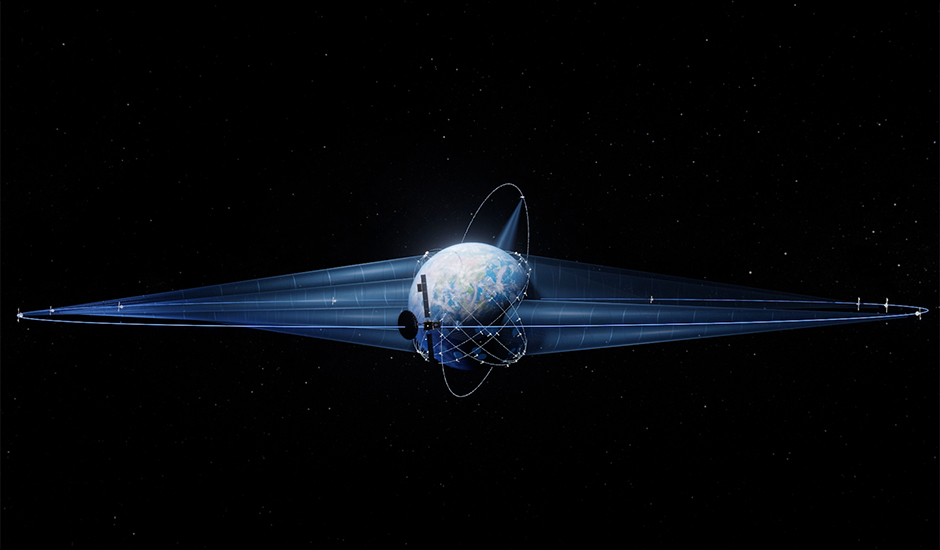Inmarsat Partner Podcast with Michael McDonnell – Director, Sales and Business Development, SATCOM, EO & T&T, Orbit Communication Systems
Inmarsat Partner Podcast with Michael McDonnell – Director, Sales and Business Development, SATCOM, EO & T&T, Orbit Communication Systems
At the recent SIA DoD Commercial SATCOM Workshop in Arlington, Virginia, we sat down with Michael McDonnell, Director, Sales and Business Development, Satellite Communications (SATCOM), Earth Observation (EO) and Telemetry and Tracking (T&T) Systems at Orbit Communication Systems, to reflect on his company’s highly successful partnership with Inmarsat and the value the two companies bring to government users.
Orbit started about 70 years ago as a small electronics company and has grown to a leading global provider of airborne communications and satellite-tracking maritime and ground-station solutions. With over 1,600 terminals delivered, Orbit offers a range of versatile and highly reliable airborne satellite communications systems of multiple antenna sizes, frequency bands and profiles that are operational on a wide range of airborne platforms such as commercial airliners, business jets, military aircraft, helicopters and UAVs. These systems are offered in Ka, Ku and X-band and provide outstanding RF, tracking and inter-satellite transition performance. They meet stringent size, weight, power and environmental requirements.
Mr. McDonnell notes on the podcast, “Inmarsat recognized the opportunity and advantages for a multi-role airborne terminal that could operate on both the Global Xpress and military satellite systems. This was a natural fit for us and a tremendous opportunity to work with the leading global mobile service provider.” He further points out that they are seeing government buyers increasingly looking at overall value, in addition to meeting the specifications. This includes flexibility and the ability to switch between systems and services. He goes on to share that their biggest recent success was Inmarsat awarding Orbit the contract for Multi-Purpose Terminal (MPT) 46WGX, designed to be fully interoperable with military Ka-band systems and optimized for use over Inmarsat’s Global Xpress constellation.
The discussion also goes into how Orbit is seeing increasing overlap and synergies between their commercial and defense products, noting that government buyers are using some of the same operational criteria as commercial operators such as throughput and system availability, as well as resilience and security.
Inmarsat services are made available globally to the U.S. government via best-in-class partners. Inmarsat type-approved satellite terminal solutions made by our trusted value-added manufacturer partners, like Orbit, form part of the high performance and all-time assured quality provided by Inmarsat services. By combining the expertise of our industry partners, who have been at the forefront of satellite communications-related technology and innovation for several decades, as well as input from our U.S. government customers, we continue to rapidly develop next-generation commercial capabilities built for users in all domains.
To learn more about Inmarsat’s partnership with Orbit watch the full video podcast:
Transcript
What does your company do?
Orbit started out 70 years ago as a small company in Israel and have grown to a leading provider of maritime and aeronautical SATCOM terminals as well as earth observation and tracking in telemetry ground stations. We are still a relatively small size which gives us some agility and flexibility. Though small, we are technically deep and have all of the capabilities in-house to design, test, and manufacture SATCOM terminals. We don’t have to outsource or subcontract parts of the development. We have a unique experience developing highly reliable terminals that meet stringent weight and size constraints while optimizing across broad frequency ranges or in different bands, as well as systems that can switch between constellations and networks.
How did your company start working with Inmarsat?
The Inmarsat government recognized the opportunity and advantages for a multi-role airborne terminal that could operate on both the GX and the military satellite systems. This is the natural fit for us and a tremendous opportunity to work with the leading global mobile service provider.
What is your biggest success with Inmarsat to date?
Our biggest success was Inmarsat awarding us the contract for the GX military satellite network dual capability airborne terminal, which is now called the MPT 46 wgx.
What makes your relationship successful?
|While we knew our technical and commercial proposals were strong, we really enjoyed and appreciated working with the Inmarsat team. We are both progressive but also pragmatic and both trying to keep in mind the end product and customer. Because of these shared values, I think we have meshed very well.
How is your company working with Inmarsat to meet the needs of government customers?
We see government buyers increasingly looking at overall value in addition to meeting the specification. This includes flexibility and the ability to switch between systems and services. They use some of the same operational criteria as commercial operators, such as throughput and system availability, as well as resilience and security.
What is next for your company’s partnership with Inmarsat?
The experience gained with Inmarsat and its service providers will help us in developing enhancements and hopefully next-generation terminals for the Inmarsat global mobile user community. We are now getting ready for certification and production of the MPT 46 wtx as well as the MPT 30 wgx Inmarsat innovative transformer airborne terminals.



